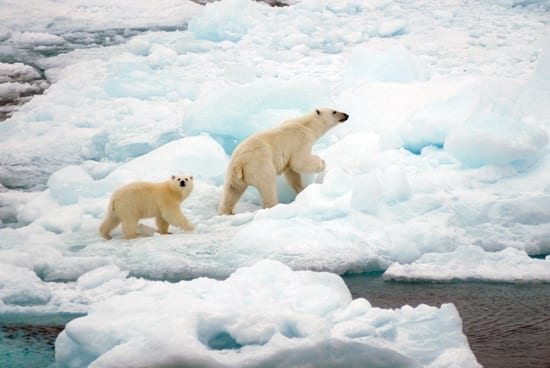Polar Bear Population Likely to Become Extinct
January 1, 2008
Within the month, the U.S. government must decide whether to list the polar bear as an endangered species. The question is: will such a declaration be too late because of climate change? A 2007 study by biologists, including Hal Caswell of the Woods Hole Oceanographic Institution (WHOI), concludes that the declining habitat of the bears—namely, the shrinking ice cover of the Arctic Ocean—makes it likely that they will become extinct in the southern Beaufort Sea, near the coast of Alaska and western Canada. The population of bears worldwide is expected to shrink by at least two-thirds of current levels. Using data from an intensive U.S. Geological Survey (USGS) study, Caswell and former WHOI postdoctoral investigator Christine Hunter (now at University of Alaska-Fairbanks) determined that climate change is dramatically hindering the polar bears’ ability to find food and to reproduce. Polar bears need ice as a platform to hunt for seals. As the Arctic Ocean lost more ice cover for more days in 2004 and 2005, polar bear breeding and cub survival declined below the point needed to maintain the population. With sea ice dramatically receding over the past decade, and projections of ice-free summers by 2050, it is hard to see a positive outcome for the ice bears. Caswell and Hunter collaborated on their reports with Erich Regher, Steven Amstrup, and Michael Rundge of USGS and Ian Sterling of the Canadian Wildlife Service. In September 2007, they presented their work to administrators of USGS, the Fish and Wildlife Service, and to Secretary of the Interior Dirk Kempthorne.
Related Links

